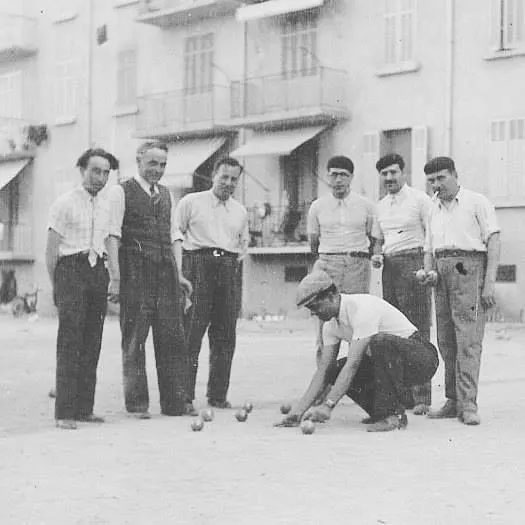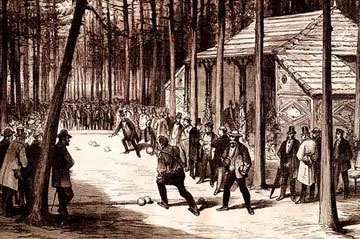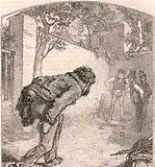A rich sporting legacy
Bocce has its roots in ancient Rome with the Romans being the first to play this game. Emperor Augustus was said to be a big fan of the game.
It was then developed in its present form in Italy, France and many of the European Mediterranean countries. It was the Italian migrants that introduced bocce to Australia.
It then became popular with their descendants and the wider Australian community. It should be noted that outside Australia, bocce has gained a huge following in places like America, Europe, South America, Africa and even Asia, with China and Japan being big on the game.

History of the Bocce Federation
The origins of bocce or as the French call the game ‘boules’, are believed to date back to 9000 BC where stone bowls were found in Turkey. Traces have also been found dating back to the time of the Pharaohs. In fact, a game similar to bocce was played in ancient Greece and during the middle ages. From the early Greek physician Ipocrates to the great Italian Renaissance man Galileo, the early participants of bocce have noted that the game’s athleticism and spirit of competition rejuvenates the body.
Bocce enjoyed rapid growth throughout Europe and became the sport of nobility and peasants alike. According to legend, Sir Francis Drake refused to set out to defend England against the Spanish Armada until he finished a game. He proclaimed, “First we finish the game, then we’ll deal with the Armada!”.
By the 1800s Bocce was played across the north of Italy and in other European countries like France, Switzerland, Luxembourg, Belgium, Germany, Slovenia, Istria, Croatia and Bosnia. In Italy men played bocce at the back of ‘Osterias’ (local town eateries) and along the back streets. As European countries colonised new found lands, they brought with them local customs and games such as Bocce or as the French call it Boules. In the mid-1800s Italy was unstable and a political unrest spread the country side. The two Giuseppe’s, Garibaldi and Mazzini led the ‘red shirts’ across the country in a bid to unify the Italian speaking peoples. It was during this period that many northern Italians started immigrating to places like Australia and America, taking the game of bocce with them.
Spreading across the globe
Now, different countries around the world have their own version of bocce. It is played with various rules and on different surfaces, although the basic aim of the sport remains the same. As interest for competition between countries grew, so did the need for uniform rules. In 1946 the French, Italian, Swiss and Monegasque Federations formed the Federation international de Boules (F.I.B.) and International competition was born. In 1985, the Confederation Mondial des Sports de Boules (C.M.S.B.) was formed to include all forms of the game. The C.M.S.B. consists of four International federations, F.I.P.J.P. (Petanque), C.B.I. (Raffa), World Bowls (Lawn Bowls), and F.I.B. (Bocce), with the F.I.B. being the oldest of the four. The C.M.S. B. was recognised by the International Olympic Committee (I.O.C.) in 1986, known as sport-boules.
Competitive bocce has a long history with the formation of the French Federation in 1888 and the Italian in 1919. But socially bocce has been played on the streets and in the parks for centuries before this. There are two main forms of bocce, Volo and Raffa.
Volo is played competitively in Australia and is the most modernised form of the game with its technical throwing events involving a high level of fitness. Professional levels of the sport are played in European countries.
Today bocce is played throughout the world with over 50 countries being members of the F.I.B. Regular World Championships for Men, Women, and juniors are held annually. It is also played at the World and Mediterranean Games. Six events are played at World Championships: Singles, Doubles, Combined (Bowl/Throw), Precision Throw, Progressive Throw, and Doubles Rapid Throw. Only the three throwing events are played at the World and Mediterranean Games, as these events are the future of the sport and adaptive to the younger generation of players. Bocce world governing body is now vying for entry to the Paris Olympics 2024.
History of Bocce in Australia
Bocce was first introduced to Australia by European migrants in the early 1900s and was played in backyards, streets and inner suburb parks. This recreational sport matured to become a fully-fledged competitive sport in the late 1960s. In 1970 the first national Bocce championships was held. This Championship is still the major annual event on the Australian Bocce calendar.
Bocce was first played in Australia by the northern Italian and Swiss Italian immigrants who came to the Victorian goldfields at Daylesford, Hepburn Springs and Yandoit in central Victoria, in the 1850s and 1860s. Much of Australia’s early day bocce was played for fun with some salami and a glass or two of vino (wine). Often the men used to play for a glass of wine.
After the 2nd world war, Italian migration to Australia grew rapidly. Many Italians from the northern Italian regions of Friuli, Venezia Guilia and Veneto came to Australia bringing the game of bocce with them. As did migrates from Croatia, Slovenia, Bosnia, Malta and France. The game was played in the backyards of boarding-houses and in places were Australia’s Italians started congregating like Carlton, Brunswick, Fitzroy, Richmond, Flemington and across the inner suburbs of Melbourne. Similar in Sydney, Brisbane, Adelaide, Hobart and Perth. Where ever a European migrate made home any corner of Australia, in most cases, they played bocce in the back yard or when on picnics.
Many Italians started settling in the north of Melbourne around Northcote and Thornbury in the 1950s.It was back in 1957 when Melbourne’s Italian community came together for the first time and formed a committee to start up a social club. from there Italian bocce legends like Virgilio Turco and Raymond (Remo) Cher from Furlan in northern Italy helped form Australia’s first bocce committee. Both men were later to become presidents of both the Victorian and Australian Bocce Federations. Seven years later and Australia’s first bocce club had opened at the original Fogolar Furlan Club in Mansfield St Thornbury on the 10th of October 1964. The original club had 4 bocce lanes with the club specifically built around the bocce court. In the early days the women played tombola (bingo) while the men played bocce.
Many of the newly arrived Italians from the northern Veneto region also joined the Furlan people at the Fogolar Club in Thornbury until they later built their own big bocce courts at the Veneto club in Bulleen. Soon after many other Italian clubs were formed around their bocce courts.
The Bocce Federation of Australia (BFA), was formed in 1971 with branches in all states. Application to the Federation international de Boules (F.I.B.) was accepted in 1973. Players represented Australia for the first time in the international Bocce arena in Val-Les-Brains, France where Australia achieved 11th placing in the four events played.
Australia has held three World Championships. In 1979, Melbourne hosted the Third World Doubles Bocce Championships, being the first in the southern hemisphere. The success of this event led to an increase in participation numbers in the sport. Melbourne also hosted the World Championship again in 1985 and the World Junior Championships in 1988 as part of the Australian Bicentenary.
In the seventies and eighties, the Government of the day set about lifting the well-being of the nation having seen a decline in leisure activity by the wider community. An advertising program was mounted and known as ‘Life. Be in It’ with a cartoon character of Norman as it’s focal point. ‘Life. Be in it’ is one of the most widely recognised lifestyle messages in Australia. It promotes healthy active lifestyles by providing fun, enjoyable programs across the nation.
In its advertising it showed Norman playing bocce and this cement the sport of bocce into the sporting landscape of all Australians. This and the employment of a part time development officer assisted this rapid growth and implemented the Federation’s growth plan. Another important step forward for the Federation was the setting up of programs for senior citizens. Australia was the first country in the world to organise women’s competitions, although only at state level. Further growth was slow, but women now have their own National championship and girls compete equally in junior competition. Below is one of the first BFA logos.
The future of Bocce
The future of the Bocce lies in the expansion of the sport within the school setting with more regular competitions for the young needing to be implemented. There is a need for greater involvement in the program development for the workplace and the rehabilitation fields.
As means of providing greater international competition without traveling to Europe. Bocce has been introduced to neighbouring countries. The Australian Bocce team visited China in 1983 to promote our sport to universities and sports institutes. The success or our visit was shown in the BFA’s return visit in 1995 when our national team played exhibition matches against Chinese regional teams.
In recent times China have achieved Gold medals at Women World Championships and medals in the Men’s. Bocce is now one of the fastest growing sports in China and China is a regular participant in the Australian Junior & Under 23 Open, which has recently been renamed the Asia / Oceania Invitational Junior and Under23’s Championship.
Today in Australia more than 10,000 people play competitive bocce sport or a form of recreational bocce with over 1 million bocce sets in homes around Australia.










